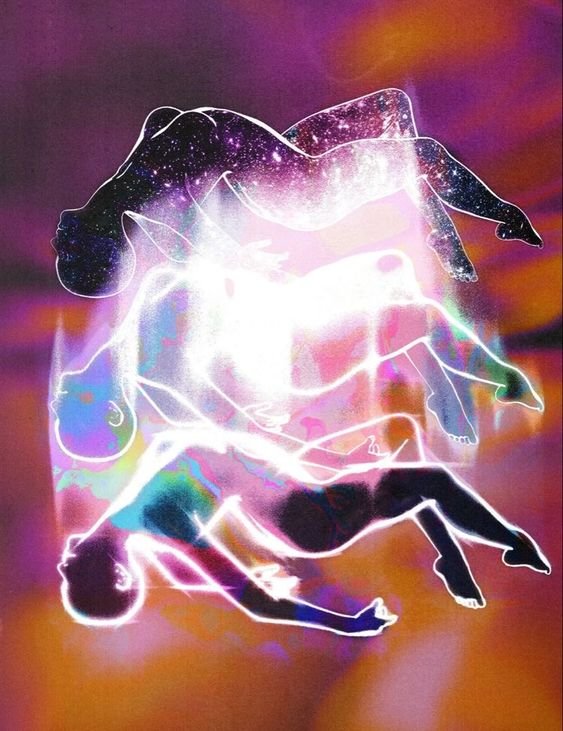Beat Chemistry
EDM'S influence on my mind, body and life
Written by Lily Mihelich, Culture Staff Writer
When I was 14, I became a recurrent visitor at the Milwaukee Rave. Eventually, I joined the crowds of DJ and EDM sets as frequently as my desolate bank account permitted. Electronic dance music piqued my interest because of its physicality; the way I could feel the bass that poured out of speakers climb into my bones through the floor's vibrations, into the chambers of my heart, and eventually, encapsulate my nervous system with a diverse array of beats. I felt as though the music altered my body and brain like it cleansed my anxiety-ridden mind; the music was infatuating, addictive and sporadic. This music genre had a colossal effect on me, and there are a wide variety of potential scientific properties that explain why EDM has been influential in my life.
A simple explanation for music's influence on our bodies lies within the well-known neurotransmitter, dopamine. The center of our brain associated with reward and pleasure releases this chemical when we listen to music that we believe to be good (University of Arizona, 2021). It's no surprise that we listen to music because it's joyful. I can't help but question why EDM in particular has ascended as one of my favorite music genres.
Our genre preferences can be understood by our brain's processing of music. For example, certain brain mechanisms have designated responses to music whose components are constructed, in part, by the types of music we are frequently exposed to. According to European Journal of Neuroscience studies, the temporal gyrus and nucleus accumbens, which are involved in our brain's expectation functions, respond differently to the different genres of music we listen to. If we listen to certain types of music frequently, we are likely to have positive expectations and responses to them (Landau, 2018). Perhaps my parents' constant playing of New Order, Donna Summer, INXS and Prince throughout my childhood generationally primed me to be an electronic music lover.
I am not surprised that EDM entered my life in early adolescence; a period of sexual, experimental and cultural exploration. EDM is recognized to mirror patterns of sexual arousal, which could potentially increase pleasure for people. The genre is composed of patterns of musical build-up and release, mirroring sexual phenomena such as orgasms through the use of technological sounds (Young, 2021). This similarity explains EDM's success in erotic, club and rave environments.
The electrical components of music have been studied for centuries. In the late 16th century, electrical music's relationship with sensuality was thought to be a prospective detriment to listeners, but this perception has evolved immensely throughout time. For example, the term "body-electric" used, in part, to link electric elements of music to the immense sexual energy in the human body, has prevailed in many ways in literary forms and music (Kenneway, 2011). Walt Whitman's famous poem, “I Sing the Body Electric” (1855), discusses how the body's energetic properties are profound and deeply connected to others, the planet, the universe and with our lovers. In 2020, Gary Clark, Cindi Lauper, Misty Copeland and others performed at the Grammy's alongside triumphant strings, piano, guitar and dancers covering the Fame song, “I Sing the Body Electric.” Music’s effect on our body's energy and physical properties is a historical affair that has intensified in the media.
The term rave is rooted in the state of “delirium” and “madness.” MDMA, LSD and other euphoric and hallucinatory drugs have a complex history with EDM and rave culture; they are ceremonial components in music enhancement, yet dangerous for users’ health (Jenkins, 2013). Clearly, scientific alterations to our bodily functions through drugs have a relationship with EDM, but the music's function even without drugs is still fascinating.
My relationship with EDM is an example of how auditory phenomena have scientific explanations and the potential to shape our lives as cultural influences. I listen to this music every day; it's what motivates me to study, work out and get ready in the mornings. This music genre has grown to be inextricably related to psychedelics, music festivals, fashion and scientific research. My infatuation with this music is rooted in far more than my admiration for an eventful night out.
Sources:
Jenkins, P. (2013, September 20). Electronic Dance Music’s Love Affair With Ecstasy: A History. The Atlantic.
Kenneway, J. (2014, February 26). Stimulating Music: The Pleasures and Dangers of "Electric Music," 1750-1900. National Library of Medicine.
Landau, E. (2018, January 23). This is your brain on music. CNN.
University Staff. (2021, December 8). How Does Music Affect Your Brain? The University of Arizona Global Campus.
Young, T. (2021). La Petite Mort: Techniques of Orgasm in Electronic Dance Music. Transposition - Musique et Sciences Sociales.
